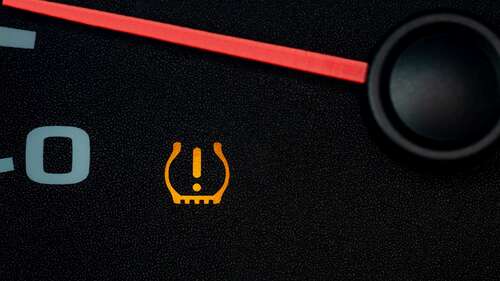
If your tire pressure light is stuck on, don’t fret too much. There’s a chance that a temperature change outside is the culprit. When air cools, it takes up less volume, causing your tire pressure to decrease as well. All you need to do is top them up to the manufacturer’s psi requirement. However, if your tires’ psi are good, there’s a chance that your TPMS sensors have gone bad. Note that if you have a newer vehicle that tells you the psi of each tire, you may be able to tell pretty quickly. Usually, instead of numbers, there will be blank spaces.
Direct TPMS sensors are attached to the inside of each wheel. They read tire pressure and sometimes temperature, too, depending on the model you own. When a tire drops 25% below the recommended PSI, the sensor will let the vehicle know, and the light will come on.
These sensors typically have a battery that lasts anywhere from six to ten years or 90K-120K miles. Unfortunately, these sensors’ batteries are not replaceable, so the only way to fix a constant TPMS light is to exchange all the sensors, especially since if one battery is dying, the rest will more than likely follow soon. According to Kelly Blue Book, the average cost to exchange your TPMS sensors can run somewhere between $314 and $386. However, some places may sell them cheaper, based on your vehicle’s make and model.

